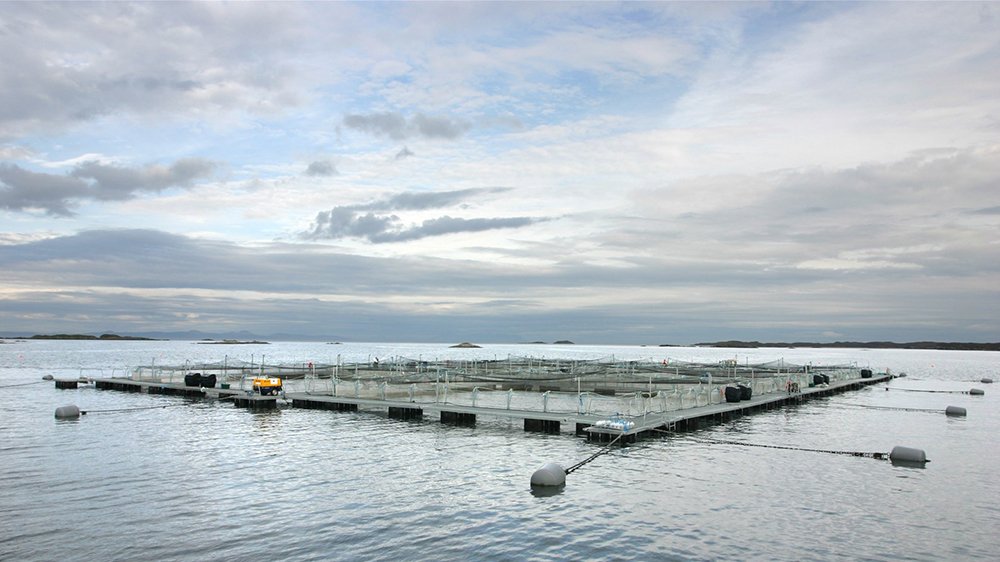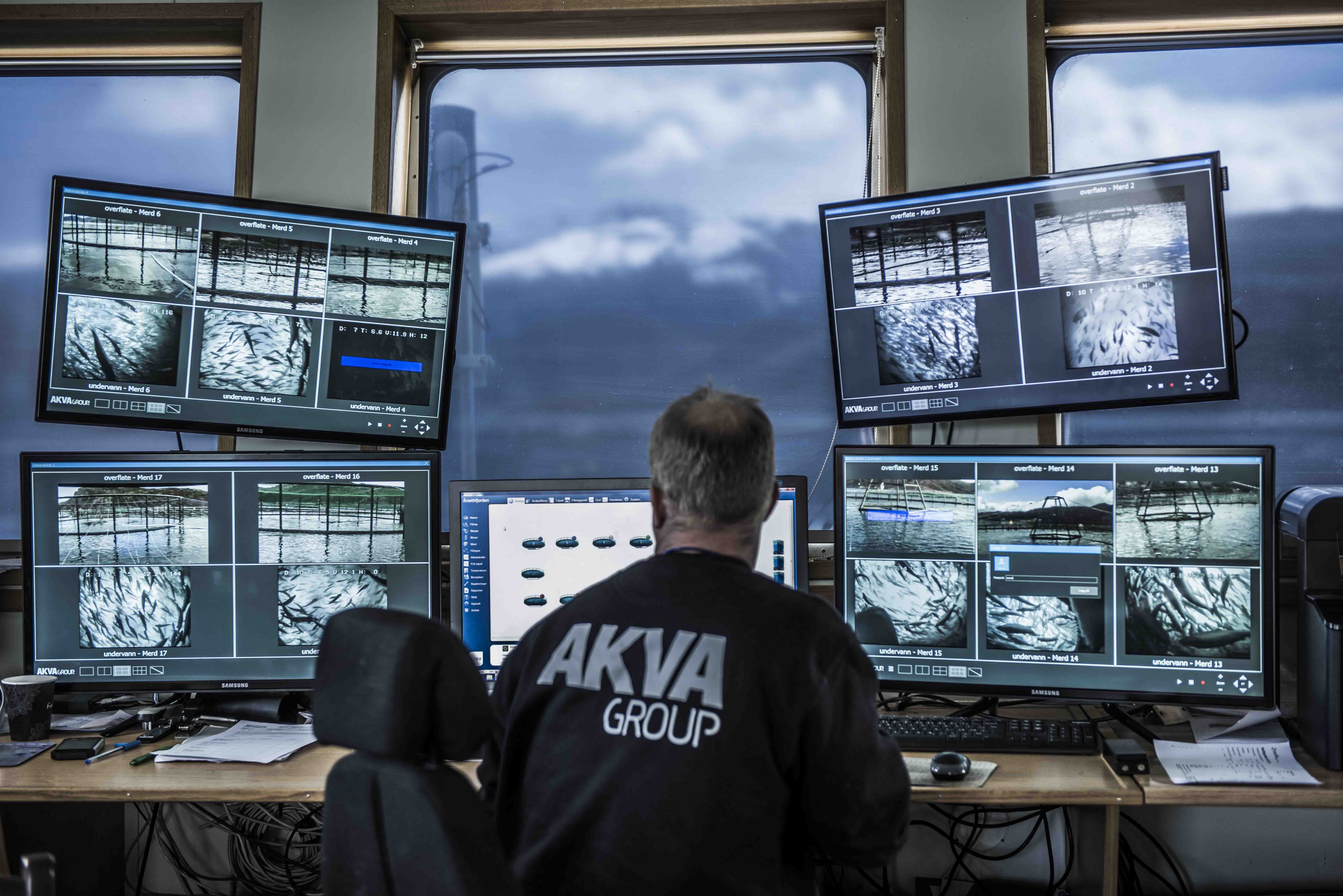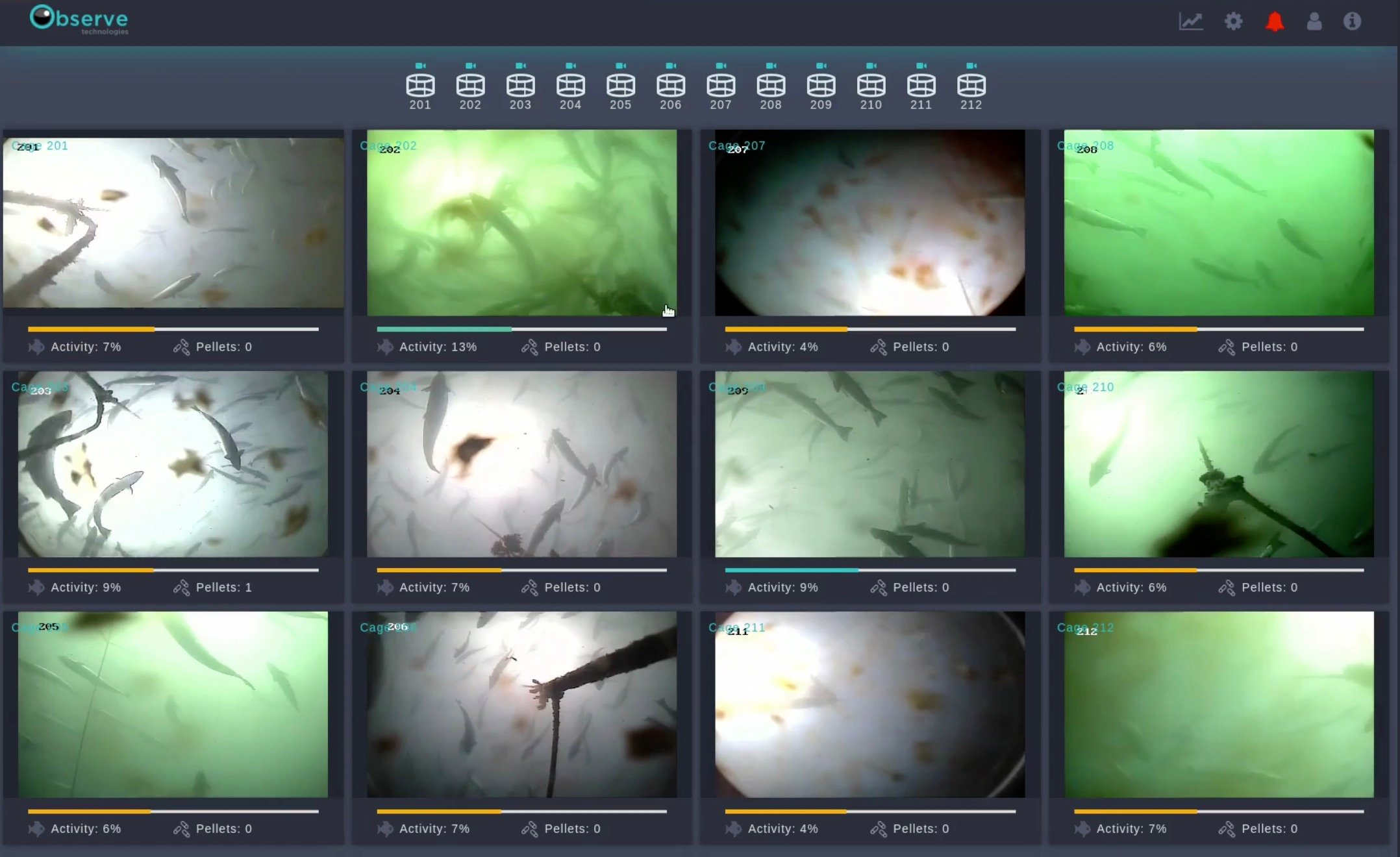
By designing a sophisticated and dynamic artificial intelligence system, we aim to convert aquaculture from art into more of a science.Salmon farming has expanded significantly over the past 30 years, resulting in phenomenal growth and a footprint where most suitable sites are already being utilized and at capacity. Future growth relies on the industry to optimize existing farms and to further industrialize new concepts, both off-shore, and on-shore. It's common knowledge that most farms have the potential to be further optimized with regards to feeding optimization and fish welfare, together accounting for more than 50% of farming costs.
{{cta('dabc2e6e-8626-49c3-8aa4-8321d9be9dd5')}}
Emphasis on AI
While past innovations have focused on hardware and data collection, we discovered the problem is not a lack of data. It's the rigor and overwhelming pressure for farmers to consistently interpret that data and apply correlations with fish activity, feeding patterns, sensory data, feed particles, and other historical information in real-time.
In 2018, AKVA group went into partnership with Observe Technologies and formed AKVA Observe to bring a new intelligent feeding assistant to the market. By designing a sophisticated and dynamic artificial intelligence system, our bold aim with AKVA Observe is to convert aquaculture practices from art into a science. The market response has been incredible, and to date, over 20 farms around the globe are using the solution.

Farmers experience overwhelming pressure to continually interpret and apply correlations with fish activity, feeding patterns, and more. AKVA Observe provides constant analytical and objective evidence of how the fish react to food and different conditions.
Click here to download product sheet on AKVA Observe
Taps into existing video and data streams
AKVA Observe is built to be adaptable and empowering for farmers, without the hassle of introducing new equipment in the pens. We use existing camera streams found in salmon farms, analyze them in milliseconds, and provide a standardized view of fish activity and detection of feed particles at different depths.
Through the combination of these factors, we can learn pen-based trends and appetites to identify suggested optimum volume of food delivery for satiation, in real-time. Furthermore, it's possible to plug in sensors, feeding systems, and other auxiliary data to make the analysis more comprehensive, supporting higher automation of farms.

Picture: Existing data streams are analyzed in milliseconds and provide a standardized view of fish activity and detection of food particles at different depths.
Remote site-level analysis
For the first time, farms have constant analytical and objective evidence of how the fish react to feed and different conditions. As aquaculture booms as a sector and more sites are regulated, our AI systems leverage cloud infrastructures to give remote site-level analysis and anomaly detection to levels never seen before.
Just the beginning
We have ensured that the farmers are the lead and the heart of our development. To understand the problems faced by farm operators, we have worked on fish sites across multiple continents. Our goal has been to develop not only a stand-alone product but a roadmap of development. We want our software to be a total investment in a platform for the future. The resulting customer feedback has been positive across the world.
Going forward with AKVA Observe, we intend to automate entire aspects of the feeding process. We seek to increase productivity and lower costs significantly with the end goal of providing salmon at robust margins.
We also plan to introduce systems to measure the weight of the fish automatically in the water, removing the manual process. When scaled, this will have an immense impact on the economy and the environment. It also allows us to better monitor the health of the pens, using anomaly detection to identify at-risk sites and respond before they become an issue.
{{cta('7458c645-5101-46e2-b140-7e9bb597a3de')}}